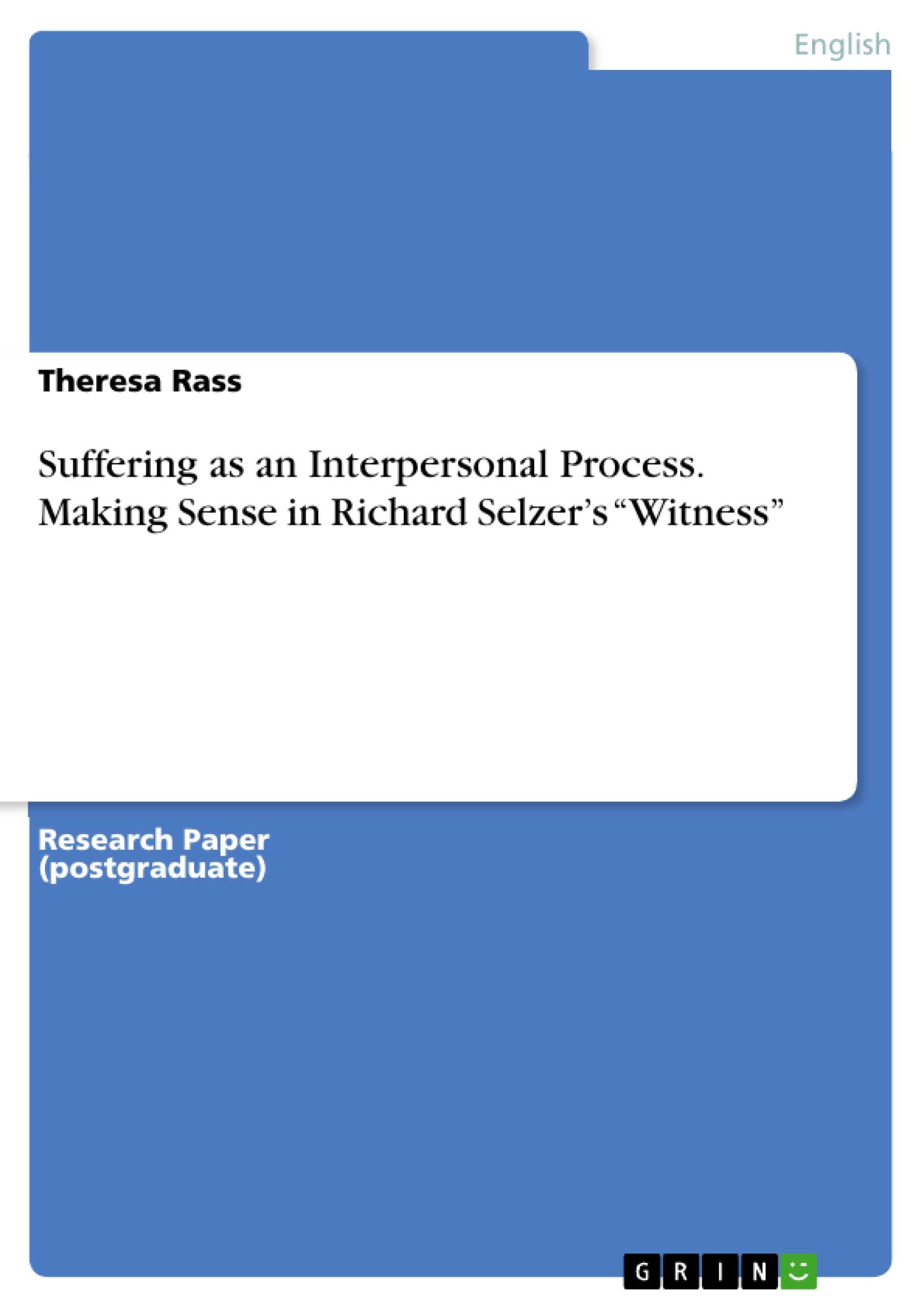This paper will be dealing with the process of making sense of suffering. On the basis of Richard Selzer’s short story “Witness”, an analysis will be given with the focus on the experience of the doctor as a witness of suffering. It will show that suffering is an interpersonal process and that, in order to understand and to make sense of it, it is important to share the experiences we make. To deal with the pain rather than to repress it is vital so one is able to learn from suffering.
First, I want to try to give a definition of suffering, considering and comparing different perspectives on the topic. A short passage on the story and its author will follow. The main part of this paper will be the analysis of the process of making sense, which can be observed in the narrator of the story. Lastly, I also want to take a look at the situation of the parents, who already have found the meaning behind suffering and accepted the “gifts” it can bring.
Inhaltsverzeichnis (Table of Contents)
- Introduction
- Towards a Definition of Suffering
- The Process of Making Sense: Doctors as Witnesses of Suffering
- The Parents' Situation: Accepting the "Gifts of Suffering"
- Conclusion
Zielsetzung und Themenschwerpunkte (Objectives and Key Themes)
This paper examines the process of making sense of suffering, drawing upon Richard Selzer's short story "Witness." It analyzes the doctor's experience as a witness to suffering, highlighting its interpersonal nature. The paper argues that sharing experiences and confronting pain are crucial for understanding and deriving meaning from suffering.- The process of making sense of suffering
- The doctor as a witness to suffering
- Suffering as an interpersonal process
- The importance of sharing experiences
- Learning and growth through suffering
Zusammenfassung der Kapitel (Chapter Summaries)
Introduction
This introduction outlines the paper's focus on the process of making sense of suffering, using Richard Selzer's "Witness" as a case study. It emphasizes the role of the doctor as a witness and the importance of shared experiences in understanding suffering.Towards a Definition of Suffering
This section explores the nature of suffering, distinguishing it from pain. It highlights the subjectivity of suffering and the impact of individual coping mechanisms. The chapter also examines the potential for suffering to manifest as physical pain, drawing on the work of Lucy Candib.The Process of Making Sense: Doctors as Witnesses of Suffering
This chapter analyzes the process of making sense of suffering as observed in the narrator of Selzer's story. It focuses on the doctor's role as a witness and the challenges of confronting suffering in a professional setting.The Parents' Situation: Accepting the "Gifts of Suffering"
This section explores the perspectives of the parents in the story, who have come to embrace the meaning behind suffering and accept its "gifts." It provides insight into how individuals can find purpose and growth through hardship.Schlüsselwörter (Keywords)
This paper focuses on the themes of suffering, witness, interpersonal experience, making sense, and learning from pain. It draws on the work of Richard Selzer, Lucy Candib, and others to explore the multifaceted nature of suffering and its impact on individuals and relationships.- Quote paper
- Theresa Rass (Author), 2012, Suffering as an Interpersonal Process. Making Sense in Richard Selzer’s “Witness”, Munich, GRIN Verlag, https://www.grin.com/document/263324



